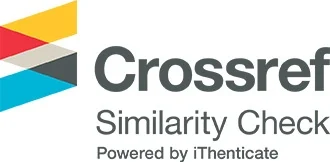Docking of various molecules including two NSAIDs as prototypes into the COX-1 enzyme
DOI:
https://doi.org/10.65137/lmj.v9i1.205Abstract
Molecular modeling studies for the cyclo-oxygenase isozyme (COX-1) and docking processes in the COX-1 active site pocket is of an importance of research in Today’s world. This is preformed in order to study the inhibition effect of these different compounds to the COX-1 enzyme by using molecular operation environment (MOE) program. Teen different chemical molecules were fitted in the active site pocket of the COX-1 enzyme and optimized in both cases before and after molecular dynamic simulations that is after taking the best conformation of each ligand of these molecules depending upon scoring investigation. The energy gain for the whole system is obtained by the subtraction of the complexed systems energies from the separated ones. The teen neutral (protonated) molecules were studied and show that the compound 3, 7 and 9 under re-optimization process after MD simulation show the best fitting among all studied molecules and their energy gains were -34.2, -40.4 and -41.21 kcal/mol, respectively. In order to know the effect of ionization on the system, The possible ionized compounds 1, 2 and 3 were studied in both the neutral and deprotonated forms. The obtained results show that both compound 1 and 2 show relatively small inhibition once they studied as in their neutral species. The effect of ionization is very clear once they re-optimized in their deprotonated species. The significant enzyme inhibition is noted since their energies gain changed in neutral forms from 14.4 and 27.3 Kcal/mol to 39.7 and 29.4 Kcal/mol of the deprotonated species, respectively.
References
[1] Smith RM, DeWitt DL, Garavito RM. cyclo-oxygenases: structural, cellular, and molecular biology. Ann. Rev. Biochem. 2000;69:145–182.
[2] Herschman H. Function and regulation of prostaglandin synthase 2. Adv. Exp. Med. Biol. 1999;469:3–8.
[3] Griswold DE, Adams JL, Constitutive cyclooxygenase (COX-1) and inducible cyclooxygenase (COX-2): rationale for selective inhibition and progress to date. Med. Res. Rev. 1996;16:181–206.
[4] Munroe D, Lau CY. Turning down the heat: new routes to inhibition of inflammatory signaling by prostaglandin H2 synthases. Chem. Biol. 1995;2:343–350.
[5] Herschman H. Prostaglandin synthase 2. Biochim. Biophys. Acta. 1996;1299:125–140.
[6] Roth GJ, Stanford N, Majems PW. Acetylation of prostaglandin synthase by aspirin. Proc. Natl. Acad. Sci. U.S.A. 1975;72:3073.
[7] DeWitt DL, Bhattacharya D, Lecomte M, Smith WL. The differential susceptibility of prostaglandin endoperoxide H synthases-1 and -2 to nonsteroidal anti-inflammatory drugs: aspirin derivatives as selective inhibitors. Med. Chem. Res. 1995;5:325-343.
[8] Taniura S, Kamitani H, Watanabe T, Eling TE. Transcriptional regulation of cyclooxygenase-1 by histone deacetylase inhibitors in normal human astrocyte cells. J. Biol. Chem. 2002;277:16823–16830.
[9] Rioux N, Castonguay A. The induction of cyclo-oxygenase-1 by a tobacco carcinogen in U937 human macrophages is correlated to the activation of NF-κB. Carcinogenesis. 2000;21:1745–1751.
[10] Foeldvari I, Burgos-Vargas R, Thon A, Tuerck D. High response rate in the phase I/II study of meloxicam in juvenile rheumatoid arthritis. J. Rheumatol. 2002;29:1079–1083.
[11] http://www.gpnotebook.co.uk/simplepage.cfm?ID=805699656
[12] http://www.glucosamine-arthritis.org/arthritis/COX-2.html
[13] http://en.wikipedia.org/wiki/Cyclooxygenase
[14] http://www.medicinenet.com/cox-2_inhibitors/article.htm
[15] Llorens O, Perez JJ, Palomer A, Mauleon D. Structural basis of the dynamic mechanism of ligand binding to cyclooxygenase. Bioorganic & Medicinal Chemistry Letters. 1999;9(19):2779-2784.
[16] Molecular Operating Environment (MOE) version 2005.06. Montreal, Canada: Chemical Computing Group; 2005.
[17] Loll PJ, Selinsky BS, Gupta K, Sharkey CT. The 2.6 angstrom modal of ovine COX-1 complexed with Ibuprofen. PDB DOI: https://doi.org/10.2210/pdb1eqg/pdb
[18] Okumura T, Murata Y, Hizue M, Matsuura T, Naganeo R, Kanai Y, Murase A, Sakakibara A, Fujita I, Nakao K. Pharmacological separation between peripheral and central functions of cyclooxygenase-2 with CIAA, a novel cyclooxygenase-2 inhibitor. European Journal of Pharmacology. 2006;539(1-2):125-130.
[19] Marti M, Tati I, Markovi S, Kujund i N, Ko trun S. Synthesis, biological activity and molecular modeling studies of novel COX-1 inhibitors. European Journal of Medicinal Chemistry. 2004;39(2):141-151.
[20] Llorens O, Perez JJ, Palomer A, Mauleon D. Differential binding mode of diverse cyclooxygenase inhibitors. Journal of Molecular Graphics and Modelling. 2002;20(5):359-371.
[21] Palomer A, Pascual J, Cabré M, Borràs L, González G, Aparici M, Carabaza A, Cabré F, García ML, Mauleón D. Structure-Based Design of Cyclooxygenase-2 Selectivity into Ketoprofen. Bioorganic & Medicinal Chemistry Letters. 2002;12(4):533-537.
[22] Palomer A, Pe´rez JJ, Navea S, Llorens O, Pascual J, García L, Mauleon D. Modeling Cyclooxygenase Inhibition. Implication of Active Site Hydration on the Selectivity of Ketoprofen Analogues. J. Med. Chem. 2000;43:2280-2284.
[23] Selinsky BS, Gupta K, Sharkey CT, Loll PJ. Structural analysis of NSAID binding by prostaglandin H2 synthase: time-dependent and time-independent inhibitors elicit identical enzyme conformations. Biochemistry. 2001;40(17):5172-5180.
[24] Kiefer JR, Pawlitz JL, Moreland KT, Stegeman RA, Hood WF, Gierse JK, Stevens AM, Goodwin DC, Rowlinson SW, Marnett LJ, Stallings WC, Kurumbail RG. Structural insights into the stereochemistry of the cyclooxygenase reaction. Nature. 2000;405:97-101 .
[25] Nørregaard R, Kwon TK, Frøkiær J. Physiology and pathophysiology of cyclooxygenase-2 and prostaglandin E2 in the kidney. Kidney Res Clin Pract. 2015;34(4):194-200.
Downloads
Published
Issue
Section
License

This work is licensed under a Creative Commons Attribution-NoDerivatives 4.0 International License.







